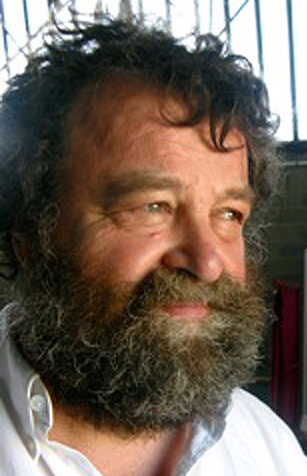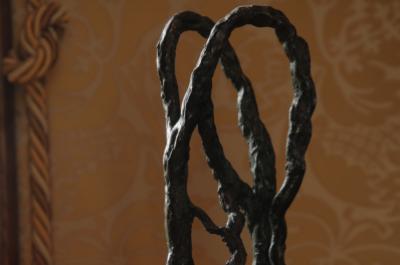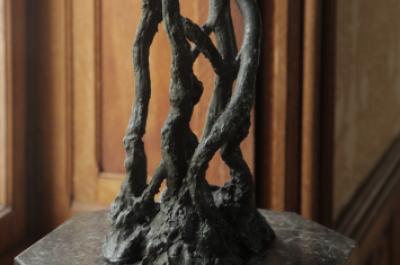Library and Great Salon, Château
Peter Briggs
"Formes hybrides en intérieur, bronzes et fontes, 1986-1994"
published at 28/11/2018

“As I was walking along some country lanes, I found the little wood of cut-down trees all in a pile. These heaps offered up an almost inexhaustible choice of lopped-off branches whose connections and divisions each represented a starting point – the beginning of a sketch of forms that will soon take shape as sculptures on show at Chaumont-sur-Loire this summer.
These plant models, so much like natural ‘ready-mades’ in a way, were the start of an architectural principle on which my work as a sculptor would build.
Working with wood and wax to begin with, I create a hybrid form for melting in metal. As the melting metal fills the mould, the wood and wax are reduced to nothing by the fire and the heat – until all that is left is their impression. Turned upside-down and filled by the bottom, these forms are then reborn, with metal filling the space where the model once stood.
This idea of circulation is reminiscent of sap, and of blood in our veins. It is this transition of the fragile model to the endurance of bronze and cast iron – from vegetable to metal – that is captured by my sculptures. These metals replace the whole of the original wax and wood structure – more than a mere mark on the surface, the result is a transmutation, a renaissance, a solid casting.
While wood is part of the plant cycle celebrated by the gardens in Chaumont-sur-Loire, metal reflects the permanence of what is built – mineral and sustainable. Two temporalities coming face-to-face, bathed in the nourishing light of the Loire riverbanks.” Peter Briggs
Biographical notes
Peter BRIGGS
GREAT BRITAIN

Born in 1950 in Gillingham (Great Britain), Peter Briggs has lived in France for almost thirty years. As a lecturer at the Tours Graduate School of Fine Arts, he expresses his way of seeing the world through sculpture and drawings. His sculptures are inspired by forms he sees in nature – they are evocative of tree ramifications or a volcano erupting… but beyond the question of representation, he questions how we perceive things and the extent of our objectivity. Since 1999, Briggs has branched out further in his research by trying out a “graphic system” aimed at piecing the optical and tactile memory of modelled parts back together through drawing. The sculptural and pictorial works are therefore closely linked and provide the artist with complementary food for thought.

